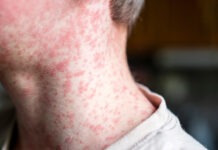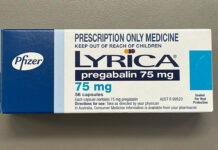Case scenario
David, a 49-year-old male, 178 cm, 93 kg, presents at the pharmacy for some advice about low testosterone levels. He states that he has been feeling lethargic, has low libido, and feels as though his strength has declined as he has gotten older. His GP had requested pathology, and David was told that his testosterone was ‘slightly low but not enough for supplementation’. David feels that testosterone will fix his issues and wishes to know how to access a prescription.
Learning objectivesAfter reading this article, pharmacists should be able to:
Competency standards (2016) addressed: 1.1, 1.4, 1.5, 2.2, 3.1, 3.5 Accreditation number: CAP2502DMTS Accreditation expiry: 31/01/2028 |
Already read the CPD in the journal? Scroll to the bottom to SUBMIT ANSWERS.
Introduction
Testosterone is a steroid hormone primarily produced in the Leydig cells of the male testes.1 To a lesser extent, it is also produced by the adrenal glands and the ovaries in females.2 Production of testosterone is controlled by luteinising hormone (LH), and follicle stimulating hormone (FSH) secreted by the pituitary gland.2 Further upstream, it is gonadotropin-releasing hormone (GnRH) from the hypothalamus that stimulates the release of LH and FSH.2 Consequently, the axis
THIS IS A CPD ARTICLE. YOU NEED TO BE A PSA MEMBER AND LOGGED IN TO READ MORE.



 Professor Margie Danchin[/caption]
Professor Margie Danchin[/caption]

 Dr Peter Tenni[/caption]
Dr Peter Tenni[/caption]
 How should we deprescribe gabapentinoids, according to the Maudsley Deprescribing Guidelines[/caption]
How should we deprescribe gabapentinoids, according to the Maudsley Deprescribing Guidelines[/caption]



 Pharmacists have always prescribed, but they have the potential to prescribe much more
Pharmacists have always prescribed, but they have the potential to prescribe much more







